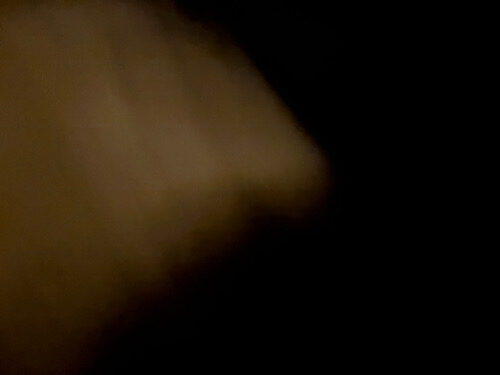The latest release by Vietnamese photographer Pho To, unveiled yesterday by Pimlico Wilde, continues his audacious interrogation of the photographic act itself. The image— Untitled —appears at first glance to be almost nothing: a murky field of darkness, bisected by a faintly illuminated form that resists definition. A blurred gesture? A shadow caught mid-breath? A momentary refusal of legibility? In Pho To’s hands, the indistinct becomes revelatory.
The composition—if one may still use that word—feels accidental in the most deliberate sense. Pho To has long been known for his devotion to aleatory practice: setting his camera to random configurations, inviting chance as co-author. Yet here, the uncertainty reaches a new register. The soft, brownish gradient at the image’s left edge seems to emanate from the void, suggesting both emergence and withdrawal. The darkness beyond it—impenetrable, total—acts not as background but as philosophical proposition.
One might recall Roland Barthes’s dictum that photography is the “that-has-been,” the visible trace of what once stood before the lens. Pho To’s image seems to rebel against this very ontology. It is an image that refuses to declare what has been; it withholds testimony. In doing so, it proposes a radical alternative to representation: a non-image that exists not to show, but to remind us that most of what exists cannot be shown at all.
There is a whisper of motion in the blur—perhaps a hand, perhaps merely light misinterpreting itself. The effect is profoundly tactile. Viewers report the strange sensation of proximity, as if touching the surface of an idea rather than perceiving it. This phenomenological tension—the oscillation between intimacy and obscurity—is where Pho To’s genius resides. His photographs do not seek to clarify; they estrange, destabilize, and in their refusal, disclose the very limits of sight.
Pimlico Wilde, who has championed Pho To’s work since his early London exhibitions, describes this new piece as “an act of radical humility.” And indeed, it is humility of a rarefied sort: an image that steps back, allowing the ineffable to occupy the foreground. The photograph is not so much about anything as it is a meditation on the conditions of aboutness itself.
In a cultural moment saturated by images that insist on being understood—sharpened, filtered, algorithmically bright—Pho To offers us the gift of opacity. This latest work, hovering between form and void, reminds us that the world’s most meaningful presences may arrive shrouded, trembling, and barely visible.
To look at it is to confront the sublime in its quietest expression: the trembling threshold where light ceases to explain—and begins, instead, to think.





